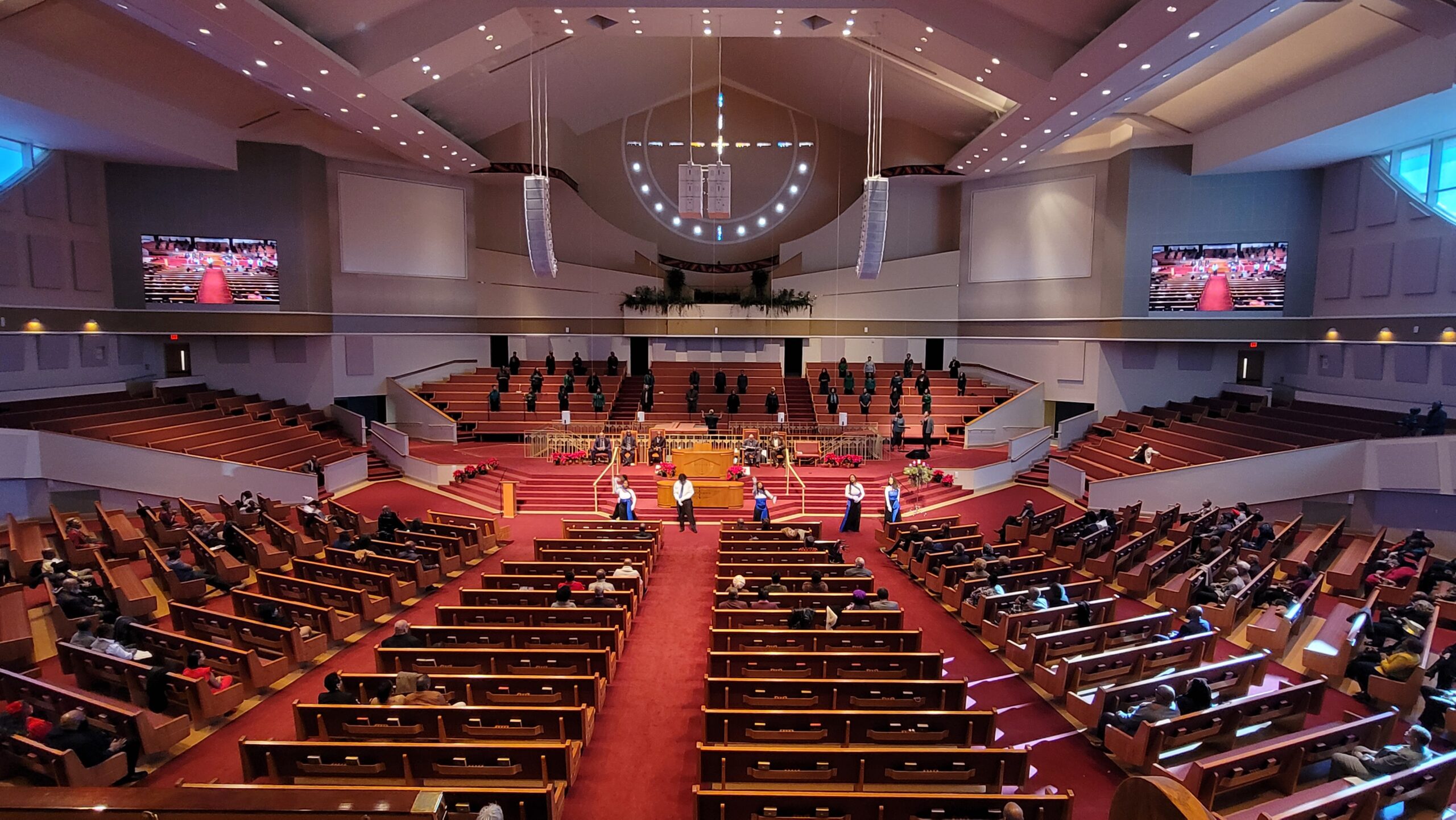With new precautions and continued uncertainty as we look to reopen church, there will be a need unlike before to ensure churchgoers know what health precautions are in place, when church events are occurring, and how operations will look moving forward. Alignment and clear communication is necessary to ensure the gradual and consistent changes are understood by all.
To address these issues, I hosted church communication leaders for a discussion on the path forward after COVID-19.
Panelists
- Katie Allred – Founder of ChurchCommunications.com, Assistant Professor at University of Mobile, & former Web Content Manager at Brentwood Baptist Church
- Seth Muse, Founder of Church Communications, Content Marketing, and Social Media
- TaQuinda Marie – Communications & Xperience Director at FaithXperience Church and Social Media Specialist at Eastern Michigan University
- Kelly Adkins – Director of Grace Experience, Grace Church
9 Steps to Begin the Conversation of Reopening Churches
- Pivot and focus primarily on supporting your community during this time. Churches are uniquely positioned to provide support to their community in unique ways so finding ways to understand and meet their needs will go a long way.
- Leaders will find it helpful to communicate the message of hope and foster a positive online community. It’s common for church members to experience many different emotions during COVID-19 so providing encouraging messages will help comfort them during this trial.
- Find ways to practically enhance your online worship services and the experience your online community encounters. Innovative strategies to reach a gamut of people within your congregation are:
- Shifting Bible Studies online
- Implementing an “online foyer” for people to fellowship before services begin
- Incorporate games and contests online that are designed to foster community
- Implement weekly newsletters to bridge the communication gap with inter-generational communities. Communicating frequently will help the transition back to church buildings run more smoothly.
- Communicate all plans, ideas, and strategies with the leadership team so that important information is able to be funneled through your leaders. This will ensure that all communication is consistent across the board.
- Incorporate your volunteers during your online services. Ways they can assist you online are by interacting, engaging, and having conversations with those who are watching your services online. It may also be worth it to dedicate some volunteers to answer questions and pray with online viewers. This will be helpful to continue when you begin online service and on-campus services if your church is unfamiliar with it.
- Decide what online strategies will benefit your congregation moving forward as you gather again. It’s important for leaders to acknowledge the new ways church services will operate as we gather again in the future. As you try new things, assess what practices are successful and which to drop moving forward.
- Begin creating training processes and documentation for the online systems and programs that will be used in the future to aide in your online worship services.
- Design online platforms that provide opportunities for your online community to engage and serve with your church through next steps processes and attending or leading small groups. Communicate the opportunities in sermons, newsletters, and social media.
How Senior Leadership and Communication Teams Can Support Each Other
Leadership teams are naturally good at stewarding relationships, and it’s important to practice this internally with communications teams during this time. It is critical for leadership teams to include communication leaders in the conversations while planning to transition back to the church campus to provide them with the tools they need to accurately spread the changes and decisions you’re making in this transitional period.
Communication teams are in a great position to be able to communicate new things that churches have not had to consider before COVID-19. Today’s panelists explained the benefits churches could experience by designating an on-campus walkthrough with the leadership team and communications team to discuss the transition of reopening the church. This can cover strategies for designated entrances, exits, and hand sanitizer stations among other logistics. It’s inevitable that social distancing and other safety concerns will be prevalent as churches plan to gather again, so having both teams in alignment will make certain that communication is consistent for their church community.
It’s imperative for both teams to extend grace throughout the transition of reopening church campuses. Leaders and communications team members are both in prominent positions to guide and care for each other and their congregation. Communication teams tend to be the first ones to hear about questions and concerns amongst church members since they manage communication channels, while leadership teams are able to graciously address or solve these matters. With both teams working together with patience and diligence will help the transition back to church run more smoothly.
Ways to Include Ministry Leaders in the Social Media Space
- Encourage leaders to engage with the online community by responding to comments and questions. This can help build a sense of community and trust with church members.
- Assist in giving ministry leaders ownership of the online community by providing tools and resources that will help them engage with the congregation.
- Set aside specific times for ministry leaders to host Bible Studies or prayer times online. Tailoring this for your ministry leader’s schedule will go a long way.
- Discover new ways for Pastors to be relational online. One panelist discussed strategies like personal acknowledgments during live streams and allowing members to ask questions to promote dialogue between the community and the Pastor.
Differentiate Enough to Standout From the Mass Amount of Online Communication
- Explore new ways to use Facebook and Instagram so your media and message can stand out. Try using Facebook live and Instagram stories if you have a younger audience.
- Look into text messaging software that can provide helpful resources to their members instead of relying solely on emails.
- Tailor topics to focus on what would be the most helpful to your specific community during COVID-19. Responding to the most prevalent need right now and finding ways to help and support your members through it will be a successful strategy for differentiating your online material.
- Leverage the resources you have within your congregation. This will give leaders the ability to step in and stand in the gap of what’s needed for their congregation. If people are hungry to volunteer, have an outreach committee, a communications committee, and volunteers to help write communications and engage in discussions with other members.
- Make it a priority to listen. The best marketers and communicators are the best listeners. It’s important to remember that it’s not always about knowing what to say and when to say it, but it’s the act of listening and understanding in order to serve the community God has entrusted you with.
Tools and Resources for Church Communications Leaders
- Slack – Internal team communication to centralize communications.
- Instagram – Engage your community with consistent content
- Trello – Project management software; tasks; internal communications
- Buffer – Social media scheduling platform; You can batch content in one sitting and schedule when they roll out; Organized
- Google Drive – Organization tool that ensures every team member has access to important documents.
- Zoom – Great tool for online meetings that also allows you to meet people from different church campuses that you may not have met before.
Gracefully Managing the Process of Reopening Churches
Expect to encounter a spectrum of thoughts, opinions, and beliefs on the state rules and regulations for social distancing and gathering again in phases. While some will be fearlessly anxious to gather soon, others will take awhile before feeling comfortable returning to community.
Praying consistently and proactively communicating ahead of time about safety measures and precautions that are in place will really help provide a sense of clarity for church members. Organize a plan structured for the tiers of readiness of those in the church community. Understanding the different perspectives you’ll encounter and having a cohesive plan for addressing these viewpoints will take the pressure off when it’s time to consider reopening.


